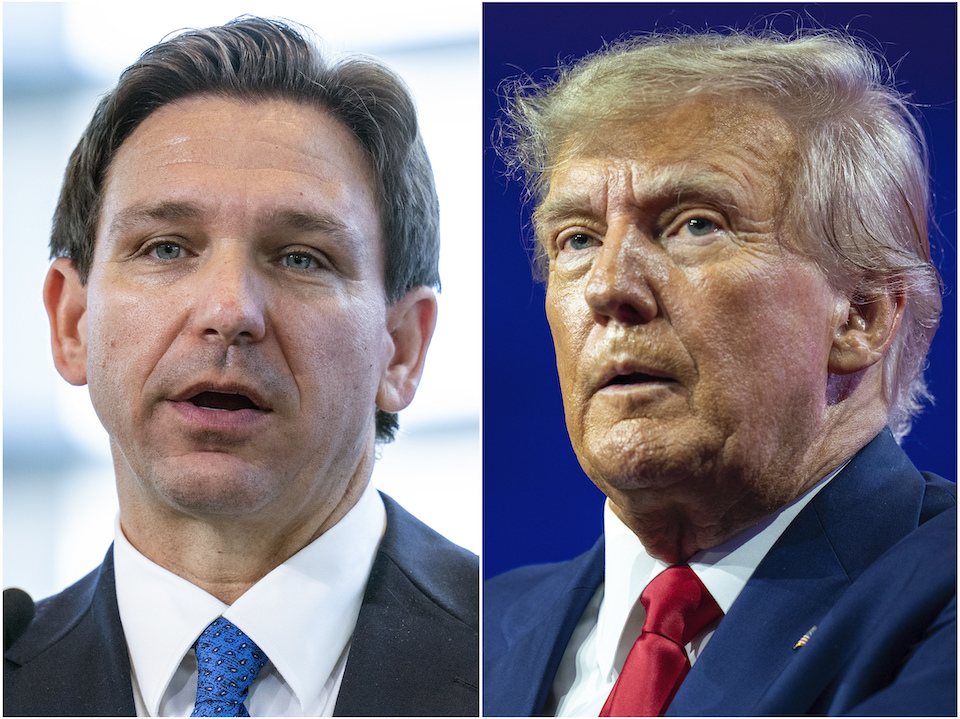
Original american civil war ended in 1865 with the victory of the North after four years of bloody clashes. For reference, the northern soldiers then wore blue, and the southerners wore gray, hence the corresponding references (blue and gray) in television series, documentaries and songs.
Roughly 150 years later, Americans are now more divided than ever in the run-up to a new presidential election like a presidential one. 2024To Donald Trump but to determine by his Trumpism the agenda, style and means (such as civil war) of political confrontation.
Trump was defeated in the 2020 election by Joe Biden. However, Trumpism as a political modus operandi still dominates the US political scene. If we accept what Charles Kessler writes in the Claremont Review of Books of the politically conservative Claremont Institute, then Trumpism is “now enjoying a second life at the state level,” fueling “an emerging new war between the American states.”
What is Trumpism?
The so-called trolling it is a series of policies that can vary in intensity: anti-immigrant, anti-vaccination, anti-science, anti-religious, anti-abortion, indicative of the new American isolationism in the international arena, as well as “America First” approaches. . But it is also the (often crude, populist, vilifying, prone to spreading fake news and low blows at the expense of opponents) way of promoting this policy.
But how is it now expressed at the state level?
The blues and grays of the American Civil War have now given way to blues and reds, with the blue states “owned” by the Democrats and the red states by the Republicans.

The President of 2000 and the colors that have changed
For the sake of history, it is worth noting that this color distinction (blue and red) was established in the US after the 2000 presidential election between Bush And Gore, that is, after a highly divided presidential race, which, as recalled, was accompanied by controversial results, legal disputes and recounts. Previously, the colors of the parties changed. “When Republicans were blue and Democrats were red. The age of color-coded political parties is later than you think,” Jodi Eda wrote in the Smithsonian Magazine a few years ago, while Paul Farhy previously reported on the same topic in the Washington Post.

In 2023, the color palette of the American political scene has strong Trumpist features.
“Red States, led by Florida, they have expanded and refined the Trump program to their own standards. With the help of solid Republican majorities in their state legislatures, Republican governors have kept taxes low, resisted the pandemic’s excessive school and business closures, fought the obsessions of academia and big business, and set about implementing the Dobbs decision that restored the state’s right. governments to enact their own abortion laws,” writes Charles Kessler in the Claremont Review of Books, arguing that within such a framework, the distance separating the blue states from the red states has now increased, taking on the characteristics of an “emergent war.”

To be fair, Kessler points to the growing rivalry between Florida and California or DeSandis and Newsom.
Republican Florida in recent years led a legislative initiative on a Trump-style agenda led by a state governor Ron De Sandys. Governor of Florida for nearly five years, de Sandys narrowly won the 2018 state election and won the 2022 election much more comfortably. Now the 44-year-old is vying for the Republican presidential nomination against Trump, whose Trumpism has borrowed heavily.
However, a few kilometers to the west, California, the “climate” is different. Led by a 55-year-old Democratic Governor Gavin NewsomThe Golden State is now presented as a “safe haven” for those who want to escape the “reactionary” laws being passed in the Florida Des Sandys. Incidentally, it’s worth noting that Newsom is similar to DeSandis in the sense that he, too, has presidential aspirations that can now be “lost” in the nomination. Biden but they will probably reappear sooner or later.

“This skirmish between Newsom and De Sandys, California and Florida is the pinnacle of a brewing war between the states. The governors of a number of other states want to get involved in the conflict (see Illinois, Michigan, Virginia, Texas, Arkansas). Generally, red states become redder and blue states become bluerwhich contributes not only to the preservation, but also to the aggravation of the differences between them,” Kessler concludes, seeing the intensification of political confrontation in the United States and generating “storms”.
Source: Kathimerini
Anna White is a journalist at 247 News Reel, where she writes on world news and current events. She is known for her insightful analysis and compelling storytelling. Anna’s articles have been widely read and shared, earning her a reputation as a talented and respected journalist. She delivers in-depth and accurate understanding of the world’s most pressing issues.